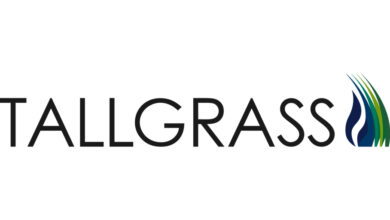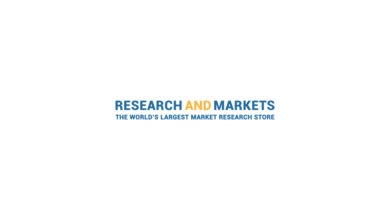Global Residential Air Purifiers Market (2021 to 2026) – Growth, Trends, COVID-19 Impact and Forecasts – ResearchAndMarkets.com

DUBLIN–(BUSINESS WIRE)–The “Residential Air Purifiers Market – Growth, Trends, COVID-19 Impact, and Forecasts (2021 – 2026)” report has been added to ResearchAndMarkets.com’s offering.
The residential air purifier market is expected to grow at a CAGR of approximately 5.38 % during the forecast period of 2021 – 2026, reaching a market size of USD 5.09 billion in 2026 from USD 3.53 billion in 2019.
Companies Mentioned
- Daikin Industries Ltd
- Sharp Corporation
- Honeywell International Inc.
- LG Electronics Inc.
- Unilever PLC (erstwhile BlueAir AB)
- Dyson Ltd
- Whirlpool Corporation
- AllerAir Industries Inc.
- Panasonic Corporation
- Koninklijke Philips NV
- IQAir
- Samsung Electronics Co. Ltd
- WINIX Inc.
- Xiaomi Corp.
Key Market Trends
High-efficiency Particulate Air (HEPA) Filtration Technology to Dominate the Market
- In 2019, HEPA-based air purifiers occupied more than half of the total residential air purifier sales by revenue since they remove particulate matter (PM2.5, PM 10) effectively.
- HEPA filters capture large airborne particles, such as dust, pollen, mold spores, animal dander, and particles containing dust mite and cockroach allergens.
- HEPA filters are a type of extended surface filter with a larger surface area and higher efficiencies for removing larger and smaller airborne particles. Moreover, these air filters remove respirable particles more efficiently than pleated filters.
- The two most common standards required for HEPA air purifiers include the capability to remove particles, i.e., 99.95% (European Standard) or 99.97% (ASME standard), which have a size greater than or equal to 0.3 micrometers.
- In 2019, high-efficiency particulate air (HEPA) filters accounted for almost 84.69% of the market. HEPA filters capture large airborne particles, such as dust, pollen, mold spores, animal dander, and particles containing dust mite and cockroach allergens. The HEPA filter-based air purifiers are expected to witness significant demand from the residential and commercial sectors during the forecast period.
Asia-Pacific to Dominate the Market
- Asia-Pacific dominated the market in 2019 and is expected to continue its dominance in the forecast period. On a country level, China is the largest market for residential air purifiers. The market in China is dominated by international brands, and its market share far exceeds that of domestic brand products.
- Rapid industrialization and urbanization are leading to high pollution levels in major cities across China and India. To tackle the growing concern, governments are taking necessary steps. In China, The Ministry of Environmental Protection imposed stringent anti-pollution targets on 28 cities around Beijing, increasing the number of air purifiers installations in most residential, commercial, and industrial buildings across these cities.
- Indian air purifier market is significantly less penetrated, although it is expected to grow at a significant rate. In September 2019, Amway India entered the home air-purifier category to launch an indoor air purifier, Atmosphere Mini. Amway’s officials have stated that the Indian air purifier market is highly underpenetrated and has a great potential to grow in the coming years.
- Many Asian countries are yet to develop comprehensive standards for air purifiers. For example, in India, where many metropolitan cities record air pollution levels far higher than acceptable limits, no clean air purifier standards exist. Also, globally, the Air Quality Index (AQI) of 20 is considered good, but in India, an AQI of 50 is deemed safe.
- Therefore, in the countries where the comprehensive standards for residential air purifiers do not exist, the market is being flooded with cheap non-standard air purifiers.
Key Topics Covered:
1 INTRODUCTION
2 EXECUTIVE SUMMARY
3 RESEARCH METHODOLOGY
4 MARKET OVERVIEW
4.1 Introduction
4.2 Market Size and Demand Forecast in USD million, till 2026
4.3 Recent Trends and Developments
4.4 Government Policies and Regulations
4.5 Market Dynamics
4.5.1 Drivers
4.5.2 Restraints
4.6 Supply Chain Analysis
4.7 Porter’s Five Forces Analysis
5 MARKET SEGMENTATION
5.1 Filtration Technology
5.1.1 High-efficiency Particulate Air (HEPA)
5.1.2 Other Technologies (Electrostatic Precipitators (ESPs), Ionizers and Ozone Generators)
5.2 Type
5.2.1 Stand-alone
5.2.2 In-duct
5.3 Geography
5.3.1 North America
5.3.2 Europe
5.3.3 Asia-Pacific
5.3.4 South America
5.3.5 Middle-East and Africa
6 COMPETITIVE LANDSCAPE
6.1 Mergers and Acquisitions, Joint Ventures, Collaborations, and Agreements
6.2 Strategies Adopted by Leading Players
6.3 Company Profiles
7 MARKET OPPORTUNITIES AND FUTURE TRENDS
For more information about this report visit https://www.researchandmarkets.com/r/rg8gug
Contacts
ResearchAndMarkets.com
Laura Wood, Senior Press Manager
[email protected]
For E.S.T Office Hours Call 1-917-300-0470
For U.S./CAN Toll Free Call 1-800-526-8630
For GMT Office Hours Call +353-1-416-8900



